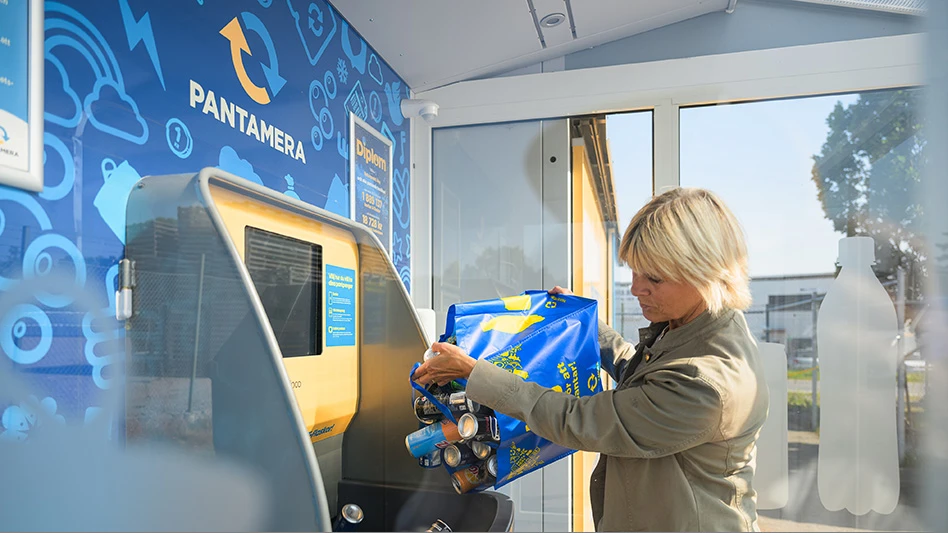My journey started out about 15 years ago, in Portland, Ore. I had changed positions from a plant manager to an account rep for the region.
I can remember buying my first load that had a problem when it arrived at the mill. The weather was kind of bad in Oregon, and we were shipping the load to California. When the load arrived, the mill called and said there was a problem.
I said, "Well, what is it?" They said, "Well, it’s covered in snow."
Of course, I wasn’t expecting to hear that I had a snow-covered load. But they said the receiving dock had a great time—they had a snowball fight. At the time it was 90 degrees in California. I was surprised the snow survived.
My first response was that we didn’t charge extra for it. The mill got a nice chuckle out of it and said there’s still the moisture deduction coming. And I began to negotiate what that deduction would be and tried to plead my case again based on the entertainment value we supplied. Needless to say I got the full moisture deduction.
We’ve spent many years trying to get the specifics right. Secondary Fiber does use the Internet. We have continued to try to promote that and to provide ways to teach and train using the Internet.
INDIVIDUAL NEEDS. The main issue that our customers have always wanted was an understanding of their mill-specific grades. It could be groundwood levels or pressure-sensitive adhesives, which are a big issue now in office pack because of legislation like HIPAA (Health Insurance Portability and Accountability Act) that requires those documents to be destroyed. Certainly ink tolerance and types of inks [also vary by mill].
Qualifying samples have turned out to be one of the easiest ways to maintain a good relationship with a customer. Typically a one- or two-pound sample is what’s required for lab tests.
We like to provide digital photos and have always tried to insist that digital photos not only establish quality of paper, but that they also establish the bale integrity. If the mill buyer has an opportunity to see how nicely they stack in someone’s warehouse, they believe that they’ll stack in theirs. Safety is always a big issue for the mills.
The supporting documentation is also important. [Mills] certainly want to know who the generators are. We do supply tags to our accounts. We like the mills knowing they came from us and the suppliers that generated them. They also need to know other information, like pickup addresses. The mills typically try to coordinate the transportation logistics themselves. Certainly, they also need the contact person at the account, phone and fax numbers. It’s important that they be able to get on the phone and contact somebody if there’s an emergency, if a truck is delayed or if additional loads are required.
Certainly accounting information for payables is always important to get correct: a contact person, established terms, etc.
LINES OF COMMUNICATION. The suppliers have their own particular needs. They want to understand the material they’re generating is actually mill-specific—[that] they have a grade the mill wants. And it’s not just the PSI standards that we’ve discovered mill customers need, they may have some special requirements, like something less than a groundwood content in a PSI standard. They’re also concerned about things like ultra violets and things like pressure-sensitive adhesives—that has been in the last nine months probably the No. 1 quality issue that we have faced on grades that we ship.
I really enjoy having a library of digital photos to send to our customers. When they’re able to see loose and baled forms of raw materials, it answers a lot of questions.
Supporting documentation, again, is important for suppliers. They certainly want to understand they have a legitimate purchase order [and] what the pricing is. They’re going to need manifests [and] release numbers so there is no confusion on who shipped a load, who needs to be paid and what the weight requirements are on a shipment.
You don’t like to charge people back, so you try to make these requirements known and clear from the beginning.
I notice that I have received recently a number of mills’ requirements to certify we’ve actually trained accounts on how to load a truck. They don’t want to receive a load that is dangerous for their employees to unload.
Communicating what customers are expecting and what suppliers need to know in order to get the specifics right is really important.
The accounting information is absolutely important. Suppliers want to be paid for loads they shipped. They like to be paid in a timely manner, so they need to understand who to talk to in the receivables department and to establish net terms, etc.
| Passing the Test |
|
Secondary Fibers sends information out that allows suppliers to test their martial. We want them to know as much as we know and as much as our mill customers know about qualifying that raw tonnage for their raw material needs. I can remember the groundwood test chemicals I used 15 years ago in the industry would come in a half-gallon jar. We would have to try and transfer that into little one-ounce bottles with eyedroppers. Needless to say, you would spill the material everywhere, and it’s a fairly toxic material, so material data sheets are important. But the new test methods in felt tip pens are very convenient for suppliers to guarantee their material will meet our customers’ specifications. I’ve always loved the grade of coated book stock—grade 43. It was another very tough grade to guarantee getting the specifics right when a mill customer actually said no UVs. Fifteen years ago, there wasn’t a convenient way to discover paper had UV inks for coatings. The old methods was to use the blender and to make yourself a hand sheet. If it was speckled with ink, you knew you had UV. Then there was the blacklight test. It required that you step into a very dark space, typically a closet, and turn the blacklight on and try to discover whether there’s UV coating. You knew there had to be a better way. Well, in fact there was. There is a UV and poly test pen and, trust me, it is much easier to use this pen than it is to use black lights or blenders. - Giles King |
We are always concerned about safety. Our mill customers, the suppliers, and unfortunately, a lot of us here do know about tragedies that have happened in the industry. Safety [and] loading diagrams are always important. A supplier certainly needs to understand those documents; they don’t want to do everything right on processing, do everything right on testing, meet the customer specs and then have a miscommunication on how to load a truck and find that the load has been rejected by the mill. Such documents can easily be transmitted across the Internet.
We do a lot of teaching over the Internet. Recently, I taught a class to some government agencies and the like. We enjoy sending information that people understand. I’m going to use a grade of office pack as an example. If we’re buying PSI grade 37, sorted office pack, it may not be the total mill requirement in that published specification. A particular mill may want zero plastic windowed envelopes. That’s a pretty tall order on an office pack grade. They may want a lesser content of groundwood then a PSI standard. They may also ask for a minimum quality of white ledger. We certainly have mills that will take 100 percent colored, but some can’t. So, communicating what that spec is is critical. I don’t like to have loads rejected because we didn’t communicate our mill customers’ needs.
There are also requirements on office pack for shredded content. If anyone here is exporting, you know a typical question is, "Does your office pack have shredded material?" The moment you say 100 percent, they say "maximum 20." We try to communicate that in a category called "additional mill requirements." It’s easy to transmit. Within minutes it’s on your computer [and] you see what the customer is asking for. A picture is worth a thousand words in many cases.
Sponsored Content
Labor that Works
With 25 years of experience, Leadpoint delivers cost-effective workforce solutions tailored to your needs. We handle the recruiting, hiring, training, and onboarding to deliver stable, productive, and safety-focused teams. Our commitment to safety and quality ensures peace of mind with a reliable workforce that helps you achieve your goals.
A customer will always want to know that a supplier has been visited or has received samples so that they can do lab evaluation.
On the other side of the table, a generator/supplier really likes the physical visit to go over the grades that it generates, the equipment it has, the type of bales it produces, the cleanliness of those bales and that it can ship a product that won’t have any rejections or downgrades.
Digital photos work wonderfully for the customers—they absolutely love having them.
Even in conversations I had about putting this session together, a couple of our customers agreed that they were going to start their own digital photo libraries. Digital photos are very easy to take and to send … so it’s an easy way to get that information and a very fast way to get that to a customer.
A PICTURE OF SUCCESS. I’ll emphasize relationship issues between suppliers and customers, because it’s very important. I titled this one "suppliers are from Venus and mills are from Mars." Now I probably owe Dr. Gray a compliment for butchering the title of his book, but it really is about relationships and communication.
I used some examples earlier on different grades where it may not simply be the PSI standards being applied, [but] a customer has some additional needs that it would like as part of its purchase order. The mill specs and documents need to be with the suppliers. Sit down and explain the difference between what they currently do and what they may have to do in order to seek a new order.
Certainly a customer wants to know that he bought a load of material, which is where purchase orders come in. You don’t want to send a load that he wasn’t expecting to receive.
A supplier certainly has to have purchase order numbers to track the load that it is shipping to a mill so it can in fact be paid for it. They do have to be legitimate numbers; you don’t want to make them up, because no one recognizes them six months from now when you’re still trying to resolve a payables or receivables issue.
Trial load evaluations are very important. The customers will go through the extra effort to qualify these loads and suppliers need to understand that it takes a little time to get the initial trial loads set up and done. Once it’s done by specifications that are established by mill customers [and] agreed to by suppliers, then it pretty much goes on autopilot afterward. But it does take a little time to make sure all the info has been communicated and that in fact you can guarantee the quality of material you’re shipping and your load will be evaluated with a positive outcome instead of a negative one.
The author is president of brokerage firmSecondary Fiber Inc. in Denver. He can be reached at giles@secondaryfiber.com.
Get curated news on YOUR industry.
Enter your email to receive our newsletters.

Explore the October 2005 Issue
Check out more from this issue and find your next story to read.
Latest from Recycling Today
- Nucor expects slimmer profits in early 2025
- CP Group announces new senior vice president
- APR publishes Design Guide in French
- AmSty recorded first sales of PolyRenew Styrene in 2024
- PRE says EU’s plastic recycling industry at a breaking point
- Call2Recycle Canada, Staples Professional expand partnership
- Circular Services breaks ground on north Texas MRF
- Tariff uncertainty results in choppy nonferrous scrap flows







